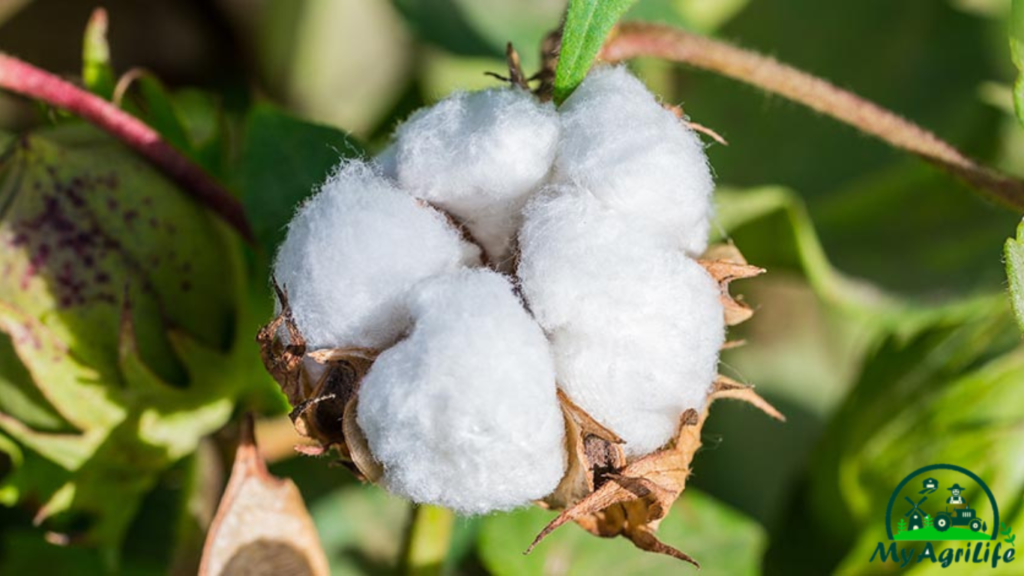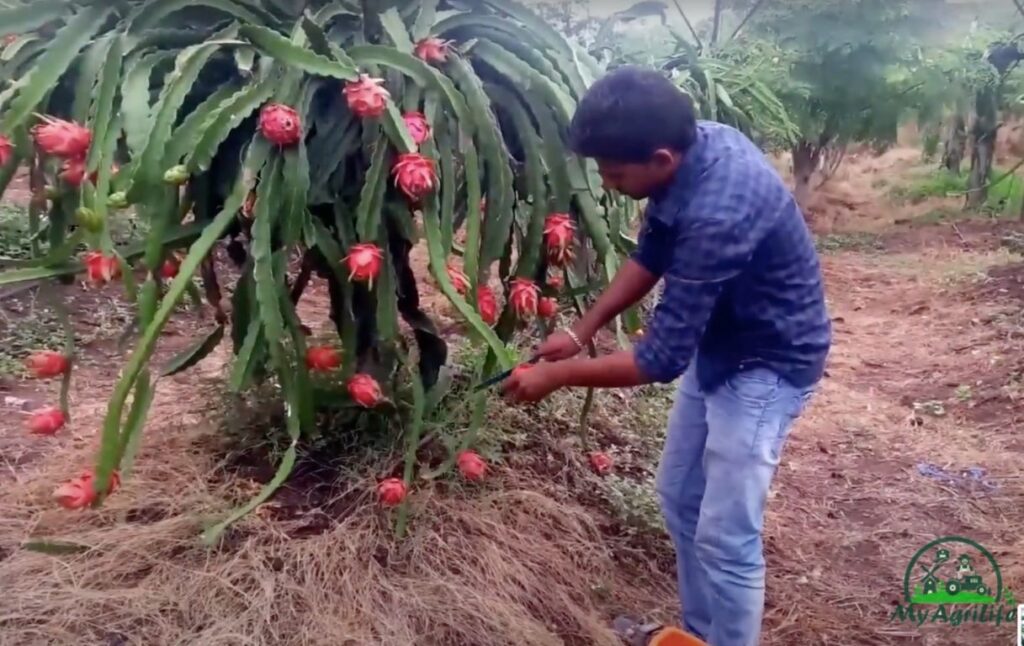Banana is a fruit that is commonly found in tropical regions of the world. It is a large, elongated fruit that is typically yellow when ripe, although some varieties may be green, red, or even purple.
Bananas are a good source of several important nutrients, including potassium, vitamin C, vitamin B6, and dietary fiber. They are also low in calories and fat, making them a healthy addition to any diet.
In addition to being eaten fresh, bananas are also used in a variety of recipes, including smoothies, baked goods, and desserts. They can also be dried and eaten as a snack, or mashed and used as a natural sweetener in recipes.
Bananas are a popular food around the world, and are often used as a staple food in many cultures. They are also an important export crop for many countries, including India, Ecuador, and the Philippines.
Seed Specification Banana
Bananas reproduce through vegetative propagation, which means that they do not have true seeds like most other fruits. Instead, new banana plants are typically grown from “suckers” or shoots that emerge from the base of the parent plant.
However, there are some wild banana varieties that do produce seeds, although they are typically not consumed for food. These seeds are small and hard, and are encased in a protective coating.
If you are interested in growing bananas from suckers, it is important to choose healthy, disease-free plants with a good root system. The suckers should be at least 1 foot tall and have several leaves before they are separated from the parent plant. It is also important to plant the suckers in well-draining soil with plenty of sunlight and regular watering.
Some popular banana varieties for cultivation include the Cavendish, Gros Michel, and Lady Finger. These varieties are known for their sweet flavor, firm texture, and resistance to disease.
Land Preparation & Soil Health Banana
The following are some steps for land preparation and soil health management for banana cultivation:
1.Clear the land: Clear the land of weeds, rocks, and other debris. This will help to ensure that the soil is free from any potential contaminants that could harm the banana plants.
2.Soil testing: Perform a soil test to determine the pH and nutrient levels of the soil. Banana plants require a pH range of 5.5 to 7.0 and a soil fertility level that is rich in organic matter and essential nutrients.
3.Add organic matter: Add organic matter such as compost, farmyard manure, or green manure to the soil. Organic matter will improve soil structure, water-holding capacity, and nutrient availability.
4.Land leveling: Level the land to ensure even distribution of water during irrigation and drainage.
5.Soil drainage: Ensure good drainage by constructing drainage channels in the field. Poor drainage can lead to root rot and other fungal diseases.
6.Soil tillage: Till the soil to a depth of 25-30 cm before planting. This will help to loosen the soil and improve aeration.
7.Mulching: Use organic mulch such as straw or leaves to cover the soil surface around the banana plants. This will help to conserve moisture, suppress weed growth, and improve soil structure.
By following these steps, you can prepare the land and improve the soil health for successful banana cultivation. Additionally, regular monitoring and management of soil health parameters such as pH, nutrient levels, and soil moisture content will help to ensure the continued health and productivity of banana plants.
Crop Spray & Fertilizer Specification Banana
Crop spray and fertilizer application are important aspects of banana cultivation. The following are some recommendations for crop spray and fertilizer specification for successful banana cultivation:
Crop Spray
1.Pesticides: It is important to control pests and diseases that can cause damage to banana plants. Pesticides such as neem oil, pyrethroids, and fungicides can be used to control pests and diseases. However, it is important to follow the manufacturer’s instructions for the correct application rate and timing.
2.Growth regulators: Growth regulators such as ethylene can be used to induce fruit ripening and uniformity in fruit size.
Fertilizer Specification
1.Nitrogen: Nitrogen is an essential nutrient for banana plants, and is required for growth and fruit production. Apply nitrogen fertilizer in split doses throughout the growing season. Recommended nitrogen application rates for banana plants are 200-250 kg/ha per year.
2. Phosphorus and potassium: Phosphorus and potassium are also important nutrients for banana plants. Apply phosphorus and potassium fertilizer in a single dose before planting or as a side dressing during the growing season.
3.Micronutrients: Banana plants also require micronutrients such as zinc, boron, and manganese. Apply micronutrient fertilizers as required, based on soil test results.
4. Organic fertilizers: Organic fertilizers such as farmyard manure, compost, and green manure can also be used to improve soil fertility and provide essential nutrients to banana plants.
It is important to follow the manufacturer’s instructions for the correct application rate and timing of crop spray and fertilizer. Over-application of crop spray or fertilizer can lead to plant damage or reduced yield, while under-application can result in nutrient deficiencies and poor plant growth. Regular monitoring of plant growth, soil fertility, and nutrient levels is important for successful banana cultivation.
Weeding & Irrigation Banana
Weeding and irrigation are important aspects of banana cultivation. The following are some recommendations for weeding and irrigation practices for successful banana cultivation:
Weeding
1. Manual weeding: Regular manual weeding is essential to keep the area around the banana plants free from weeds. Hand weeding can be done using a hoe or a hand tool to remove weeds.
2. Mulching: Mulching the soil around the banana plants with organic matter such as straw or leaves can help to suppress weed growth and retain soil moisture.
3. Herbicides: Chemical herbicides can also be used to control weeds. However, it is important to follow the manufacturer’s instructions for the correct application rate and timing, and to avoid drift or overspray that can damage banana plants.
Irrigation
1. Water requirements: Banana plants require consistent moisture levels for optimal growth and fruit production. The water requirements of banana plants depend on factors such as soil type, temperature, and humidity. Typically, banana plants require 2000-2500 mm of water per year.
2. Irrigation systems: Different irrigation systems such as drip irrigation, sprinkler irrigation, or flood irrigation can be used depending on the availability of water and the soil type. Drip irrigation is the most efficient and water-saving method for banana cultivation.
3. Irrigation scheduling: Irrigation should be done based on the soil moisture content, weather conditions, and the growth stage of the plants. Banana plants should be irrigated once or twice a week during the growing season.
By following these recommendations for weeding and irrigation, you can help to ensure the healthy growth and optimal yield of your banana plants.
Harvesting & Storage Banana
Harvesting and storage are critical steps in the process of banana cultivation. The following are some recommendations for harvesting and storage of bananas:
Harvesting
1. Harvesting time: Bananas should be harvested when they are mature, but not yet ripe. The maturity of the fruit can be determined by the change in color of the fruit from green to yellow or light green.
2. Harvesting method: The bunches of bananas should be cut off the plant with a sharp knife, leaving about 30 cm of the stem attached to the bunch. The bunches should be handled carefully to avoid damage to the fruit.
3. Harvesting frequency: Harvesting frequency can vary depending on the variety and the climate conditions. Generally, bananas can be harvested every 8-12 months, depending on the growth rate of the plants.
Storage
1. Temperature: Bananas should be stored at a temperature of 13-15°C to slow down the ripening process. If the temperature is too low, the bananas can become damaged, while if it is too high, the bananas will ripen too quickly.
2. Humidity: Bananas should be stored in a humid environment to prevent dehydration and maintain freshness. The recommended humidity level for banana storage is 85-90%.
3. Ventilation: Proper ventilation is important to prevent the buildup of ethylene gas, which can accelerate the ripening process of the bananas. Ensure good ventilation by placing the bananas in an open storage area or using a fan to circulate air.
4. Avoid exposure to sunlight: Bananas should be stored in a dark place to avoid exposure to direct sunlight, which can cause the fruit to ripen too quickly.
By following these recommendations for harvesting and storage, you can help to ensure the quality and freshness of your bananas, and maximize their shelf life.
Conclusion
In conclusion, banana farming is a rewarding agricultural practice that can provide a sustainable source of income and nutritious food. By following proper land preparation techniques, maintaining soil health, and implementing effective weed control and irrigation practices, farmers can ensure the healthy growth and high yield of banana plants.
Regular monitoring of plant health, pest and disease control, and timely application of fertilizers and crop sprays are essential for successful banana cultivation. Harvesting bananas at the right stage of maturity and implementing proper storage techniques can help preserve the quality and extend the shelf life of the fruit.
Banana farming requires knowledge, attention to detail, and ongoing care, but the results can be fruitful. With the right practices and proper management, banana farmers can enjoy a successful and sustainable banana farming venture.









